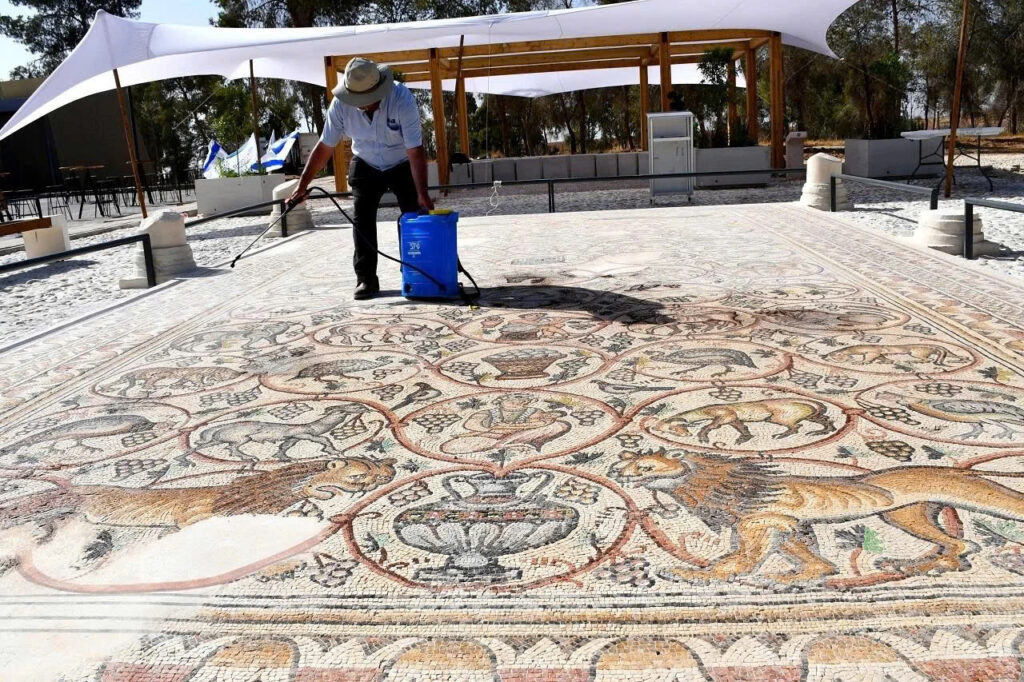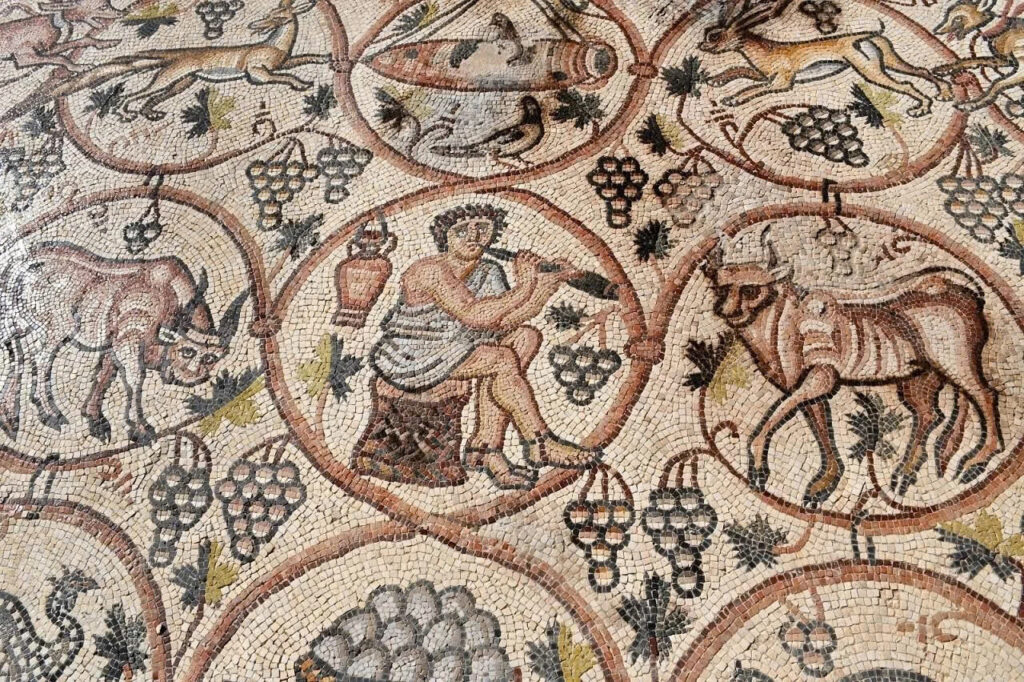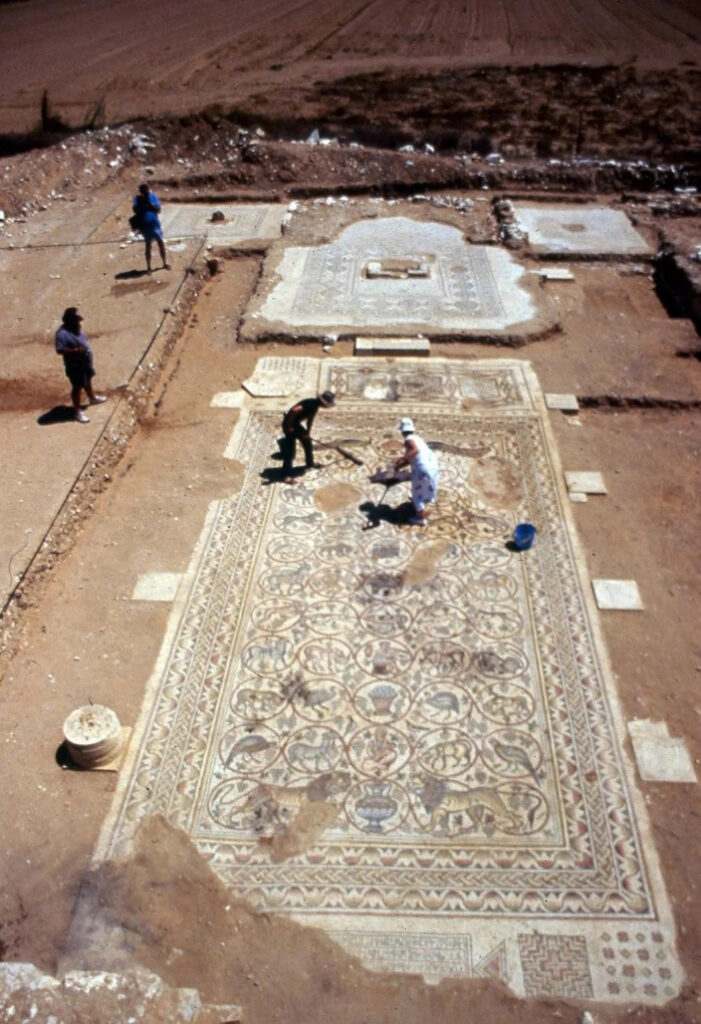A Remarkable Archaeological Discovery in the Negev
After more than three decades since its initial discovery, an extraordinary 1,600-year-old Byzantine mosaic has been revealed to the public in Israel’s Western Negev Desert. This archaeological gem, considered among the finest ever found in the region, now serves as a window into ancient civilizations for contemporary audiences.

The mosaic was first uncovered in 1990 near Kibbutz Urim, in close proximity to the Gaza Strip. Following years of meticulous conservation work, this stunning artifact from the Be’er Shema (Birsama) site has found its permanent home at the Merhavim Regional Council headquarters.
An Artist’s Vision Preserved in Stone
The Mosaic’s Intricate Design
Dating from 324–638 CE during the Byzantine period, this remarkable artwork originally graced a substantial monastery complex. The mosaic showcases 55 elaborate medallions, each meticulously crafted to depict various themes including mythological narratives, hunting expeditions, exotic wildlife, fruit-filled baskets, and glimpses of everyday ancient life.

Shaike Lender, the archaeologist who spearheaded the initial excavation for the Israel Antiquities Authority (IAA), describes the work as the creation of “a genuine master artist.” The creator skillfully assembled thousands of tiny colored stones, glass fragments, and pottery pieces to produce these vibrant and intricate compositions.
Evidence of Monastic Life

The excavation site revealed additional fascinating elements beyond the mosaic itself. Archaeologists discovered a substantial winepress alongside storage vessels, providing clear evidence that the monastery operated as a self-sufficient community with its own wine production facilities.
A Strategic Location Along Ancient Trade Routes
Gateway Between Desert and Civilization

The monastery’s location was strategically chosen along a historic pathway connecting Halutza in the Negev to the coastal city of Gaza. This settlement provided essential refuge for travelers navigating the challenging desert terrain. The route formed part of the ancient Nabataean-Roman spice trade network and served as a crucial transition zone between the harsh desert environment and established settlements.
Video
Conservation Efforts and Modern Presentation
Protecting a Cultural Treasure

After its discovery, the mosaic was initially protected with covering layers to prevent damage from environmental factors and agricultural activities. However, natural deterioration over time necessitated urgent conservation intervention by the IAA and the Israeli Ministry of Heritage.
Through the “Antiquities Right at Home” program, the mosaic underwent careful re-excavation, comprehensive restoration, and relocation to a secure public display area.
A New Cultural Landmark

Shay Hajaj, Head of the Merhavim Regional Council, emphasized the significance of this preservation effort: “This magnificent mosaic stands as a living testimony to the vibrant life that flourished in the Negev approximately 1,500 years ago. It will be safeguarded here and function as a central attraction for educational visits—welcoming tourists, students, and residents from throughout the nation.”
Modern Accessibility and Education
Today, visitors can experience this ancient masterpiece within a thoughtfully designed open archaeological garden. The site features comprehensive informational displays, comfortable seating areas, and accessible pathways. Officials anticipate that this location will serve dual purposes as both a significant cultural monument and an invaluable educational resource for future generations.

